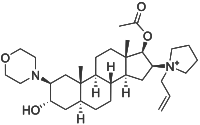
Photo from wikipedia
Study objective: Although both succinylcholine and rocuronium are used to facilitate emergency department (ED) rapid sequence intubation, the difference in intubation success rate between them is unknown. We compare first‐pass… Click to show full abstract
Study objective: Although both succinylcholine and rocuronium are used to facilitate emergency department (ED) rapid sequence intubation, the difference in intubation success rate between them is unknown. We compare first‐pass intubation success between ED rapid sequence intubation facilitated by succinylcholine versus rocuronium. Methods: We analyzed prospectively collected data from the National Emergency Airway Registry, a multicenter registry collecting data on all intubations performed in 22 EDs. We included intubations of patients older than 14 years who received succinylcholine or rocuronium during 2016. We compared the first‐pass intubation success between patients receiving succinylcholine and those receiving rocuronium. We also compared the incidence of adverse events (cardiac arrest, dental trauma, direct airway injury, dysrhythmias, epistaxis, esophageal intubation, hypotension, hypoxia, iatrogenic bleeding, laryngoscope failure, laryngospasm, lip laceration, main‐stem bronchus intubation, malignant hyperthermia, medication error, pharyngeal laceration, pneumothorax, endotracheal tube cuff failure, and vomiting). We conducted subgroup analyses stratified by paralytic weight‐based dose. Results: There were 2,275 rapid sequence intubations facilitated by succinylcholine and 1,800 by rocuronium. Patients receiving succinylcholine were younger and more likely to undergo intubation with video laryngoscopy and by more experienced providers. First‐pass intubation success rate was 87.0% with succinylcholine versus 87.5% with rocuronium (adjusted odds ratio 0.9; 95% confidence interval 0.6 to 1.3). The incidence of any adverse event was also comparable between these agents: 14.7% for succinylcholine versus 14.8% for rocuronium (adjusted odds ratio 1.1; 95% confidence interval 0.9 to 1.3). We observed similar results when they were stratified by paralytic weight‐based dose. Conclusion: In this large observational series, we did not detect an association between paralytic choice and first‐pass rapid sequence intubation success or peri‐intubation adverse events.
Journal Title: Annals of Emergency Medicine
Year Published: 2018
Link to full text (if available)
Share on Social Media: Sign Up to like & get
recommendations!